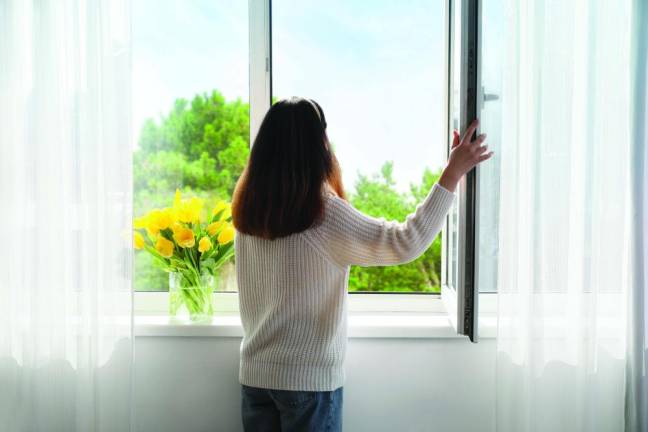Tips to reduce home energy costs
Energy. A changing season offers new opportunities to use less energy and lower costs.

When building your budget, utility bills – especially the electric bill – are likely one of your largest monthly expenditures. One of the biggest culprits: home heating and cooling, which account for more than half of the average American household’s annual energy consumption, according to estimates from the Energy Information Administration.
Here’s a list of things that can help you go green and save some green.
Windows
Open your windows as the mild temperatures of spring arrive, allowing for a cross breeze which will naturally cool rooms without using an air conditioner. Consider updating your home’s window treatments. Energy-efficient covers like shades, blinds or film can drastically impact heat gain as temperatures rise in the afternoon. You’ll give the home a fresh new look while reducing energy costs. Use these new window treatments to bring in more sunlight during daylight hours, then turn off artificial lights. Skylights can also significantly brighten a home — at no charge.
Have HVAC Systems Serviced Regularly
For best performance and efficiency, regular maintenance of your heating and cooling system is imperative. Keeping outdoor units free of debris and changing air filters are tasks most homeowners can handle on their own but bringing in a professional – usually in the spring and fall – can help ensure your HVAC system and all its components, including electrical and ductwork, are functioning properly.
Improve Your Insulation
Poorly insulated attics, walls, ceilings, floors and crawl spaces can lead to energy waste and increase costs by requiring more energy to heat or cool your home. Because air can escape through these spaces when your HVAC system pushes air through your home, adding insulation can help reduce losses and keep your home more comfortable.
Fans and Vents
Experts say you can comfortably raise thermostats by as much as four degrees simply by installing and cooling your home with ceiling fans. You’ll be lowering costs without sacrificing anything in terms of comfort. Engage the venting systems while cooking and after bathing to remove warm, often humid air that can lead to longer operational cycles for your cooling unit.
Leaks
Many homes lose pricey air conditioning through leaks around windows and doors. Buy weatherstripping or apply low-cost caulk to seal any openings. These cracks make a surprising contribution to high utility costs. For instance, air loss through your air-conditioning unit’s duct system may account for nearly 30% of its energy consumption.
Use Appliances During Non-Peak Hours
Rather than using your oven, stove or clothes dryer from noon-6 p.m., peak time for many electricity providers, consider doing so in the morning or later at night. Using these appliances outside of the peak timeframe, when conventional heating and cooling systems are often running full bore, can help lower energy costs. Some utilities may also offer plans that incentivize limiting energy use during peak hours.
Adjust the Temperature
While you’re sleeping or away from home, adjust your thermostat up 5-10 F in the summer or down 5-10 F in the winter, which can help lower annual heating and cooling costs if done consistently. A smart thermostat can monitor your energy use and behaviors then automatically adjust to make your home more energy efficient. Consider installing a programmable thermostat so that you can raise the settings when you’re not home or during off-peak hours, an option that may help reduce energy costs by as much as 10%. Consider using an outdoor grill on nice spring days, rather than heating up your home while using an indoor oven.
Think Multi-Zone
Consider upgrading to an all-climate, multi-zone heat pump, which can seamlessly connect to multiple indoor units, revolutionizing the way you experience comfort in your home. By eliminating problematic hot and cold spots in your home, this system ensures personalized comfort tailored to individual zones and optimizes energy usage by directing it only to the areas requiring heating or cooling. Replacing an outdated HVAC system with a multi-zone solution can also help achieve cost and energy savings. By efficiently managing temperature in different zones, you can experience improved energy efficiency, resulting in a more sustainable and economical solution for heating and cooling.
Look for Incentives and Rebates
Qualified homeowners may be eligible to save money on qualified home energy improvement projects. The Inflation Reduction Act of 2022 (IRA) offers tax credits and rebates, including a credit of 30% (up to $2,000) for qualifying heat pump installation, an energy-efficient option to replace fossil fuel-burning furnaces. Other incentives under the IRA include offsetting costs of electrical panel upgrades and rebates for homes with energy usage reductions of 20% or more.